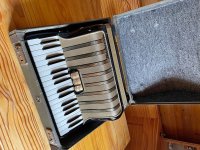jensenvideo
Member
This came up on FB today- purchased new by owner in 1954! Played only occasionally since. He's asking $700 in excellent condition. Wonder if this is a good deal and a quality accordion. It has musette- which I like. Still a beginner and wanting something reasonably light to play a variety of music.
https://www.facebook.com/marketplac...ghtspeed_banner&referralCode=messenger_banner

https://www.facebook.com/marketplac...ghtspeed_banner&referralCode=messenger_banner

